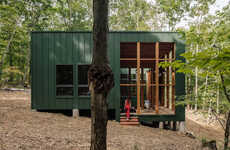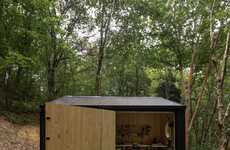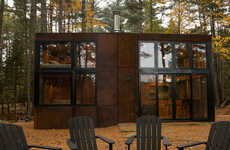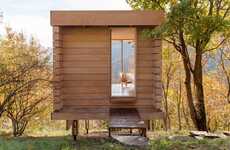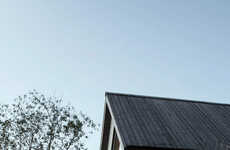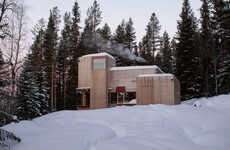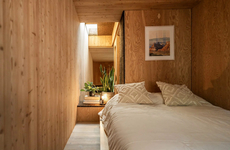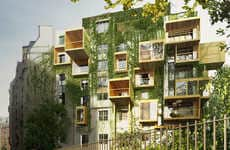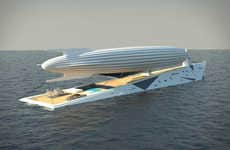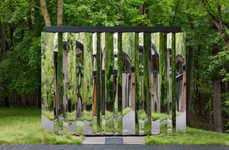
Prentiss Balance Wickline Architects' Sleek Design is Award-Winning
Kalin Ned — August 29, 2018 — Art & Design
References: pbwarchitects & dezeen
Forest cabins are good for retreats out in nature and away from the ever-developing digital world. When it comes to architecturally arranging one such dwelling, designers either create a lush and luxurious abode or a minimalist modern dwelling. The Lot 6 Cabin by Washington-based studio Prentiss Balance Wickline Architects is a mixture of both. Designed for "an active couple who loves the outdoors," the low-slung abode is made to be functional and to not interfere too blatantly with the surrounding natural landscape.
Relying on "plywood, shiplap siding and standing-seam metal" as primary materials, the dwelling boasts a one-storey layout at the base of a mountain. What sets this structure apart from other forest cabins is its recognition — the structure received the 2018 design award from the AIA's Spokane chapter.
Photo Credits: Eirik Johnson
Relying on "plywood, shiplap siding and standing-seam metal" as primary materials, the dwelling boasts a one-storey layout at the base of a mountain. What sets this structure apart from other forest cabins is its recognition — the structure received the 2018 design award from the AIA's Spokane chapter.
Photo Credits: Eirik Johnson
Trend Themes
1. Minimalist Forest Cabins - Designers are creating forest cabins with a minimalist aesthetic, blending modern design with the natural landscape.
2. Functional Dwelling Design - Architects are focusing on creating functional forest cabins that cater to the specific needs and activities of the occupants.
3. Recognition for Forest Cabin Designs - Forest cabins are receiving recognition and design awards for their innovative and well-executed architectural designs.
Industry Implications
1. Architecture and Design - The architecture and design industry has the opportunity to explore innovative approaches in creating forest cabins that harmonize with nature and provide an exceptional living experience.
2. Outdoor Recreation and Tourism - The outdoor recreation and tourism industry can benefit from the development of functional and aesthetically appealing forest cabins, attracting nature enthusiasts and travelers seeking unique experiences.
3. Sustainable Building Materials - The sustainable building materials industry has the potential to supply eco-friendly materials, such as plywood and standing-seam metal, for the construction of forest cabins that blend with the natural environment.
6.9
Score
Popularity
Activity
Freshness

